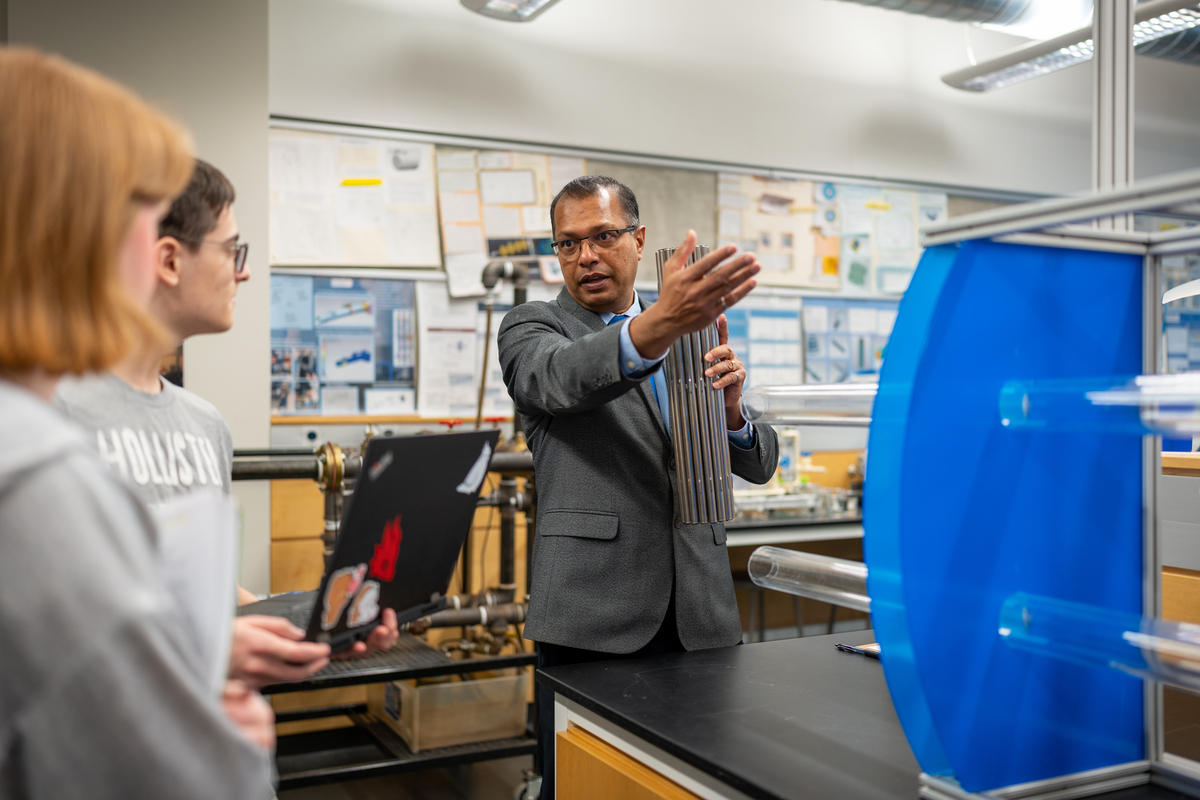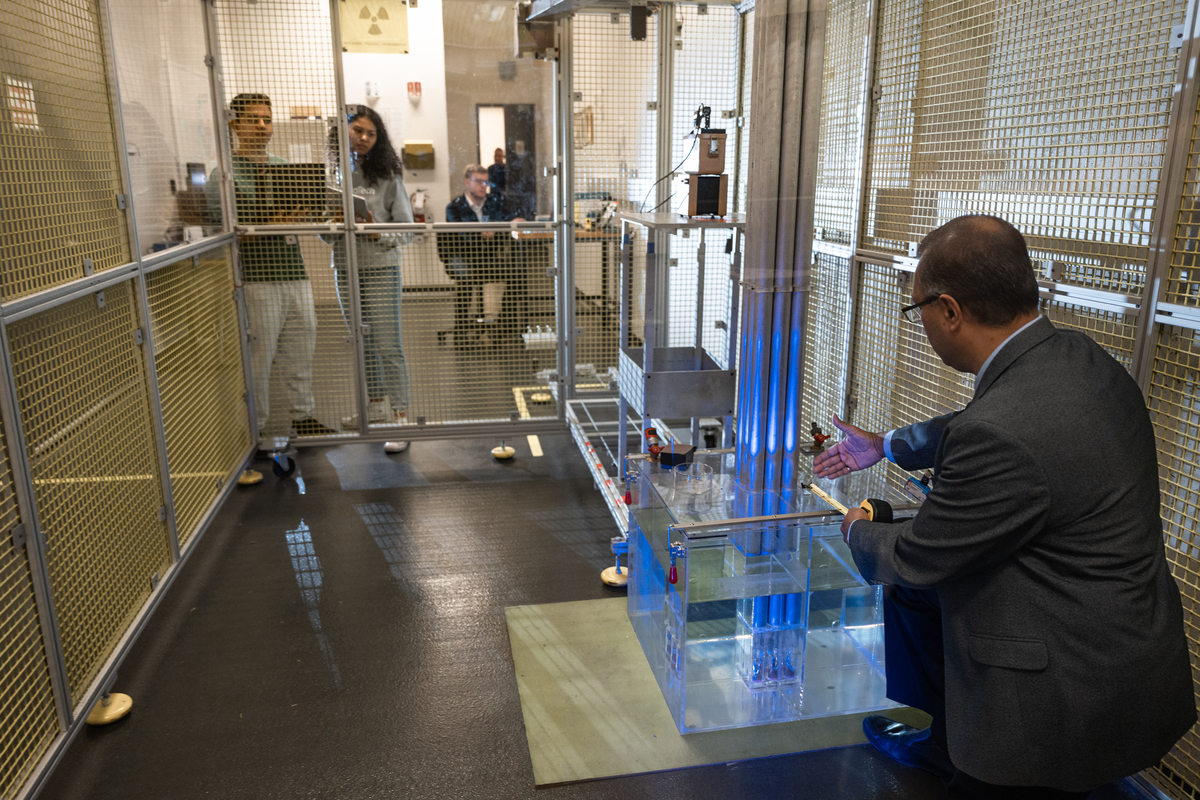Research and innovation
Leaders in research
We’re ranked first in Ontario and second in Canada among smaller research universities. One-third of our research is focused on nuclear engineering, science, and related fields essential to nuclear power advancement.
Our researchers partner with industry, governments and communities to develop nuclear solutions for key technical, environmental and social challenges.


Nuclear experts
NSERC-UNENE Health Physics and Environmental Safety
- Dr. Ed Waller: UNENE Research Chair
- Dr. Kirk Atkinson: UNENE Associate Chair, Director of the Centre for Small Modular Reactors
UNENE and CANDU Owners Group Collaborative Projects
- Dr. Glenn Harvel: UNENE Research Collaborative Project: Waste management and radionuclide monitoring
- Dr. Kirk Atkinson: Biodosimetry for retrospective assessment of low dose exposure and feasibility of in-vivo measurement of radiation exposures

Key interdisciplinary experts
Canada Research Chairs
- Dr. Horia Hangan: Canada Research Chair in Adaptive Aerodynamics (Tier 1), Faculty of Engineering and Applied Science (FEAS)
- Dr. Sheldon Williamson: Canada Research Chair in Electric Energy Storage Systems for Transportation Electrification (Tier 2), FEAS
- Dr. Peter Lewis: Canada Research Chair in Trustworthy Artificial Intelligence (Tier 2), Faculty of Business and Information Technology
Energy Research Excellence Chairs
- Dr. Ibrahim Dincer: Global leader in sustainable energy solutions and hydrogen, FEAS
- Dr. Jennifer McKellar: Cost and Environmental Impacts in Energy Systems, Graduate Program Director (Energy and Nuclear Engineering Department), FEAS
Other researchers
- Dr. Isabel Pedersen: Director, Decimal Lab and Director, Digital Life Institute, Faculty of Social Science and Humanities
- Dr. Scott Nokleby: Innovating robotic technology to reduce human exposure to hazardous environments, FEAS
- Dr. Marc Rosen: Researcher in sustainable energy, sustainability, and environmental impact, FEAS
- Dr. Atef Mohany: Expert in aeroacoustics, fluid-structure interaction, flow-induced vibration and noise, turbulent flows, structural dynamics, and noise and vibration control, FEAS
